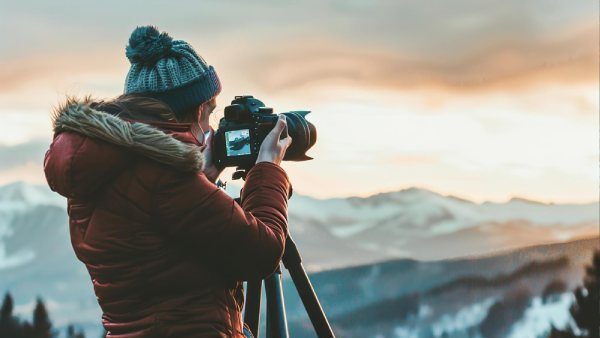Wildlife Photography Tips in Kashmir. The mesmerizing landscapes of Kashmir offer an exceptional backdrop for wildlife photography. With its rich biodiversity, from the Himalayan brown bear to the striking Kashmiri stag (Hangul), the region is a haven for photographers seeking to capture nature’s essence. This guide provides essential wildlife photography tips for your Kashmir adventure, ensuring you’re ready to capture Kashmir’s unique wildlife.
1. Know the Best Times to Visit Kashmir for Wildlife Photography


The timing of your visit can significantly impact your success in wildlife photography. The best time for photographing wildlife in Kashmir is during the early mornings and late afternoons. This is when animals are most active, and the natural light is softer, adding warmth and depth to your photos. Plan your trip between spring and autumn when wildlife is more visible and accessible.
2. Equip Yourself with the Right Gear


Using suitable photography equipment is vital for wildlife photography. A camera with a fast shutter speed and a zoom lens is essential for capturing quick movements from a safe distance. Carrying a tripod or monopod is beneficial for stabilizing long lenses, especially for photographing elusive animals like the Himalayan snow leopard. Remember to bring extra batteries, memory cards, and weatherproof gear to protect your equipment from Kashmir’s unpredictable weather.
3. Study the Habits of Kashmiri Wildlife


Understanding animal behavior is key in wildlife photography. Research the habitats and habits of species like the Hangul deer, Himalayan black bear, and golden eagles. Patience and observation are essential. The more you know about these animals, the better you can predict their movements, making it easier to capture rare and memorable shots. For example, the Hangul deer are more likely to be seen during mating season in Dachigam National Park, making this the ideal time for close encounters.
4. Practice Ethical Wildlife Photography


Respect for nature should always come first. Ensure you’re not disturbing the animals or their environment while photographing. Use a zoom lens to maintain a safe and respectful distance. Avoid loud noises or sudden movements, as they can stress wildlife and impact your shot. Practicing ethical wildlife photography not only helps conserve the environment but also enhances the authenticity of your images, providing a true reflection of Kashmir’s natural beauty.
5. Master the Art of Lighting


In wildlife photography, lighting plays a crucial role. The golden hours—early morning and late afternoon—are ideal for capturing Kashmir’s wildlife with a natural, warm glow. During midday, when the sun is harsh, consider using a fill flash to soften shadows. Kashmir’s mountainous landscape can create unique lighting challenges, but experimenting with natural light and shadows can help you capture stunning, dramatic images.
6. Patience and Persistence


Wildlife photography demands patience. Animals in the wild follow their own schedules, and capturing the perfect shot requires waiting quietly, sometimes for hours. Use this time to observe your surroundings, anticipate animal movements, and set up for the ideal shot. Remember that each animal behaves differently, so patience and persistence are essential for success in Kashmir’s rugged landscapes.
7. Enhance Composition and Framing Skills


Framing and composition are crucial for impactful wildlife photography. Use the rule of thirds to add depth and focus to your shots. In Kashmir’s vast landscape, including a part of the background, such as snow-capped mountains or dense forests, enhances the story of your subject. Experiment with wide-angle shots to capture animals in their natural habitat, while close-ups work well for showing intricate details.
8. Explore Kashmir’s Best Wildlife Photography Destinations


Kashmir has several rich biodiversity zones ideal for wildlife photography. Dachigam National Park is famous for Hangul deer and a variety of bird species. Hemis High Altitude National Park is known for the elusive snow leopard, while Gulmarg Biosphere Reserve hosts rare birds and animals. Visiting these renowned parks not only increases your chances of spotting unique wildlife but also provides the perfect natural backdrop for photography.
9. Use a Reliable Kashmir Travel Guide


For those unfamiliar with the terrain, partnering with a reliable travel guide is invaluable. They can lead you to hidden spots where animal sightings are more common, enhancing your overall experience. Many guides in Kashmir specialize in wildlife photography tours, offering insight into animal behavior, local flora, and the region’s conservation efforts.
Final Thoughts
Wildlife photography in Kashmir is an extraordinary experience, providing the chance to capture the majestic beauty of nature. Whether you’re a beginner or a professional, these wildlife photography tips can help you make the most of your journey. Remember, ethical practices, patience, and the right equipment can turn a simple photo into a masterpiece. By following these guidelines, you can not only capture amazing photos but also contribute to Kashmir’s rich and vibrant natural heritage.
For more insights on wildlife photography and to book your next Kashmir adventure, visit Kashmir Travel Guide.
